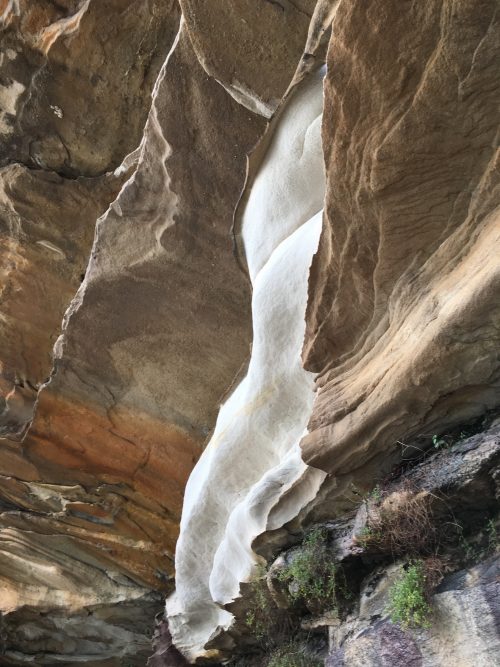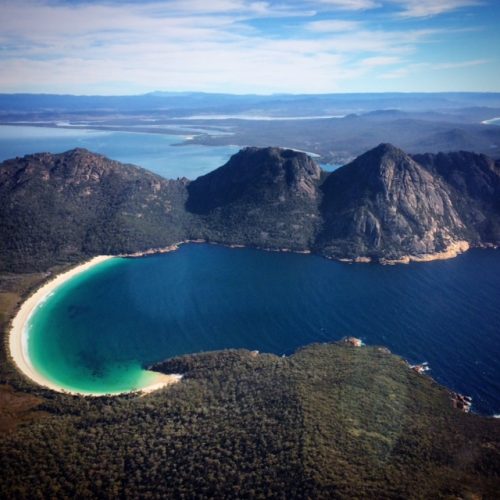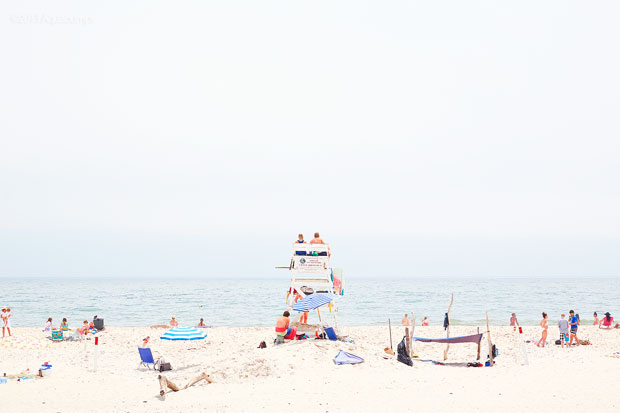 The day started misty with rain which made wandering in the outdoor markets less than appealing. And so we turned towards Bondi and a shop that Jeremy had mentioned many times, Aquabumps. Eugene Tan, the owner and photographer, has stuck close to his passion – surf, surfing, beach – and has a fabulous collection of photographic prints of the same. He started assembling his work with a daily, early morning visit to Bondi beach to photograph the surf and surfers. Over the years he has expanded his locales to include Indonesia, Hawaii and, as above, East Coast Long Island. And this lovely photograph of Sag Harbor now belongs to Jeremy, his birthday present from Mom.
The day started misty with rain which made wandering in the outdoor markets less than appealing. And so we turned towards Bondi and a shop that Jeremy had mentioned many times, Aquabumps. Eugene Tan, the owner and photographer, has stuck close to his passion – surf, surfing, beach – and has a fabulous collection of photographic prints of the same. He started assembling his work with a daily, early morning visit to Bondi beach to photograph the surf and surfers. Over the years he has expanded his locales to include Indonesia, Hawaii and, as above, East Coast Long Island. And this lovely photograph of Sag Harbor now belongs to Jeremy, his birthday present from Mom.
From Bondi we wended our way back to my favorite part of Sydney, Woollahra, a charming neighborhood of pretty houses, boutiques, good restaurants and great produce. We stopped at Victor Churchill, a world renowned butcher that is as beautiful to look at as, I am sure, the meats are delicious. So pristine that you could eat off the floor, watching the racks being trimmed is tantamount to observing an artist creating his masterpiece. There were sides of beef for sale, I noticed, costing well over $100 per pound.
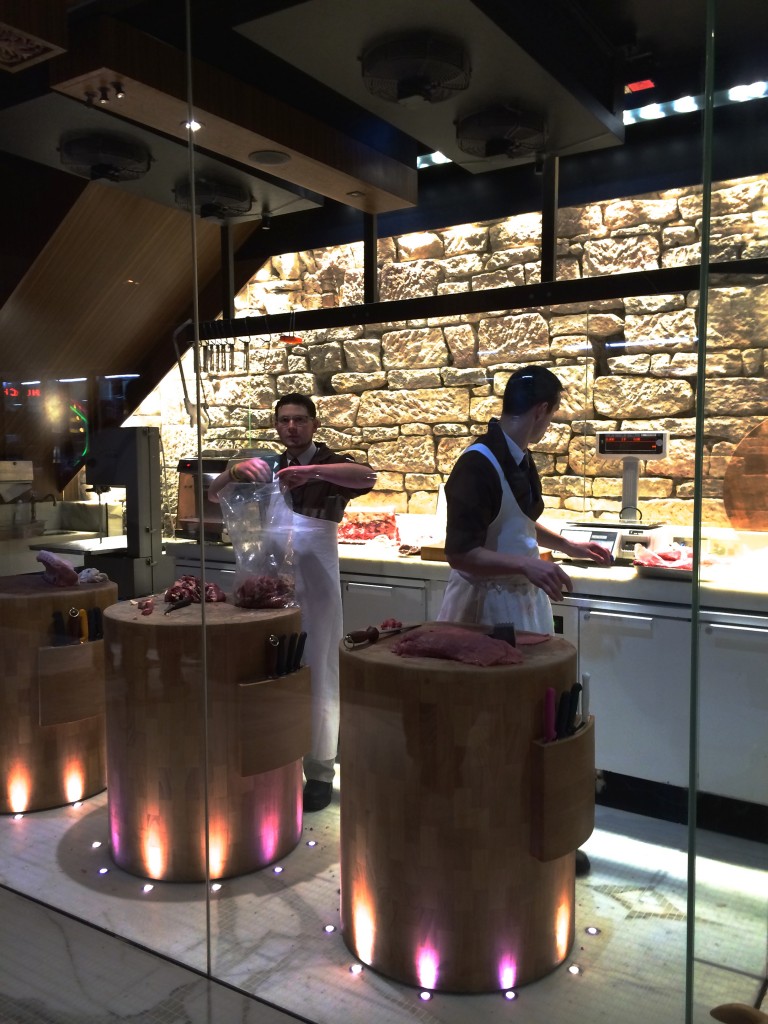 Before lunching at Chiswick on its delicious farm to table menu, we stopped in at a Tibetan shop – Tibet Sydney – that had lovely rugs and lingered at Gingko Leaf on Queen Street, a boutique that focuses on well crafted, well designed contemporary Japanese household items that include ceramics, porcelain, glassware, wood crafts, ironware and textiles. A real find.
Before lunching at Chiswick on its delicious farm to table menu, we stopped in at a Tibetan shop – Tibet Sydney – that had lovely rugs and lingered at Gingko Leaf on Queen Street, a boutique that focuses on well crafted, well designed contemporary Japanese household items that include ceramics, porcelain, glassware, wood crafts, ironware and textiles. A real find.
Back to the lovely Park Hyatt for the required afternoon nap (still fighting the cold and jet lag), and then I flagged a cab and headed to North Sydney’s Mossman neighborhood where Jeremy and Katie were barbecuing dinner on the balcony of their lovely flat. Skype and face time are all fine but there is nothing quite like being there, fingering the fabrics, walking on the wooden floors, feeling the space. What a wonderful life they have created for themselves in Sydney and how fortunate I am to share a few moments of it with them.
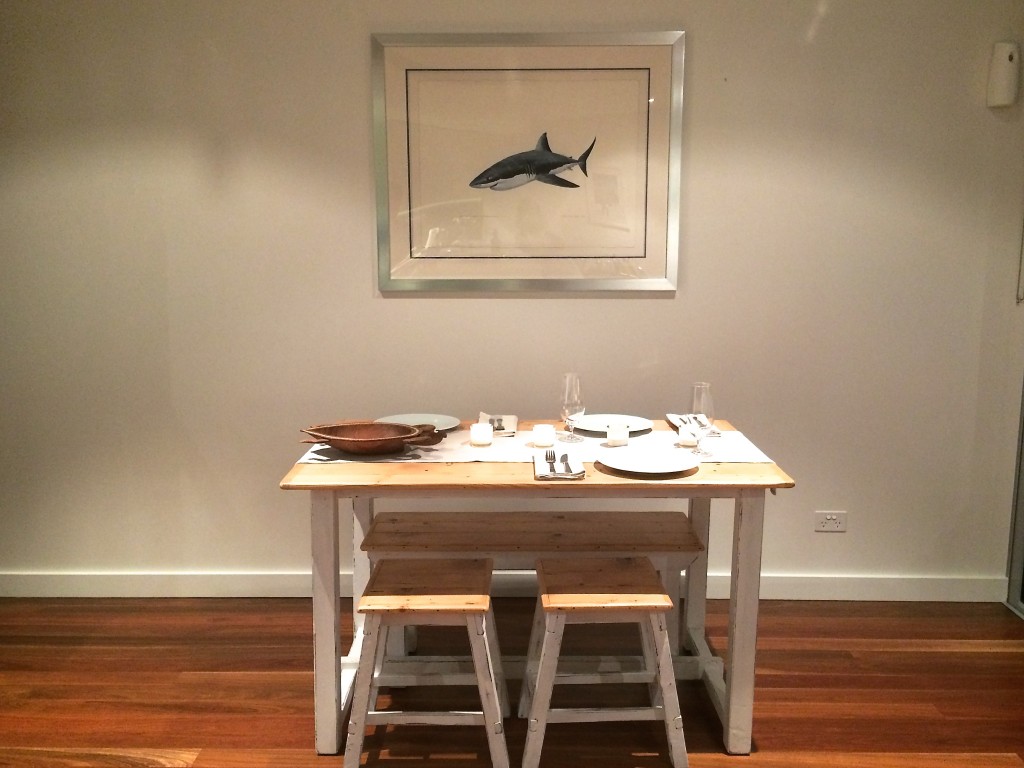
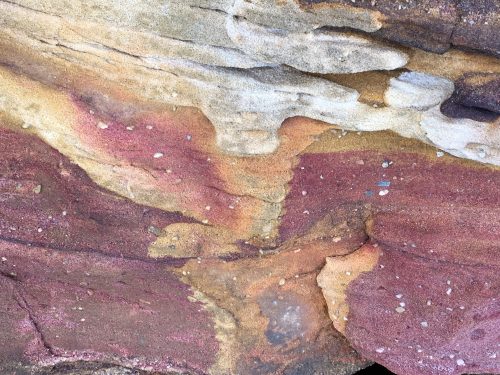
The story of much of Australia is the story of sandstone. Arrive in Sydney and it's all around you - in buildings proud and humble, in the pavement, in its many beaches. It comes in all colors and so the buildings are red and yellow, the beaches white and black, the art - contemporary sandstone sculpture or Aboriginal ochred painting - in all of these hues.
But, while beautiful, sandstone bedrock produces insipid soil and a poor growing environment and so vegetation, wildlife and humans have had to adapt and they have done so in fascinating, and sometimes shocking, ways. A kangaroo doesn't hop but he springs, covering long distances and expending minimal energy. When, in the outback, temperatures rise above certain levels, a kangaroo will eject the joey from her pouch so that her own chances of survival increase. And if rains fail and graze is sparse, a roo can even put her pregnancy on pause until conditions improve.
Similarly, indigenous tree species cannot afford to lose their leaves to herbivores and so they defend themselves with toxins. The many species of eucalyptus emit their oil in a faint blue haze (hence the name Blue Mountains) and provide koalas, with digestive tracts adapted to processing these toxins, their diet.
And, finally, sandstone has played a crucial role in Aboriginal culture. The ancient rock art found etched into soft sandstone tells their stories and provides a map of their relationships with the sky, the land, earth's creatures and with each other. And because the sandstone is so soft, these etchings - some 20,000 years old or more - have been redrawn through time and across country and have survived.
Lesson #2: Everything natural and cultural takes its shape from the rock upon which it lies.
" ["post_title"]=> string(36) "Lessons From the Land Down Under (2)" ["post_excerpt"]=> string(0) "" ["post_status"]=> string(7) "publish" ["comment_status"]=> string(6) "closed" ["ping_status"]=> string(6) "closed" ["post_password"]=> string(0) "" ["post_name"]=> string(14) "lessons-land-2" ["to_ping"]=> string(0) "" ["pinged"]=> string(0) "" ["post_modified"]=> string(19) "2016-11-14 12:20:23" ["post_modified_gmt"]=> string(19) "2016-11-14 17:20:23" ["post_content_filtered"]=> string(0) "" ["post_parent"]=> int(0) ["guid"]=> string(31) "http://lisalindblad.com/?p=5862" ["menu_order"]=> int(0) ["post_type"]=> string(4) "post" ["post_mime_type"]=> string(0) "" ["comment_count"]=> string(1) "0" ["filter"]=> string(3) "raw" } }